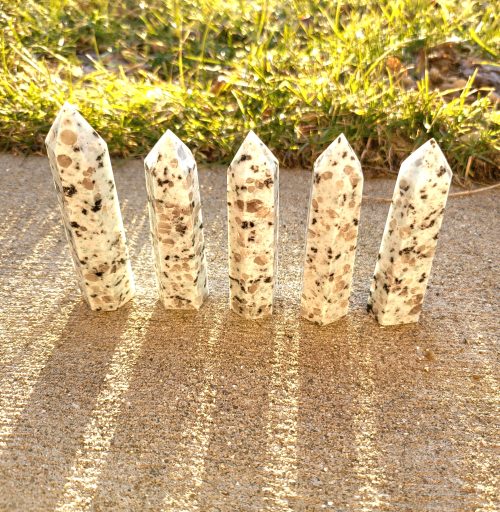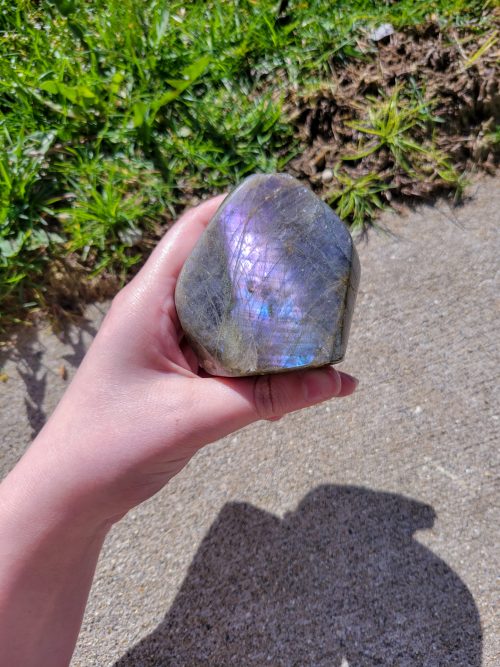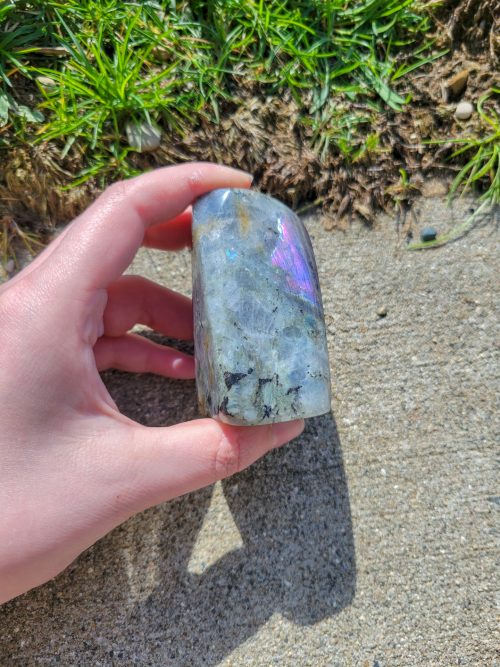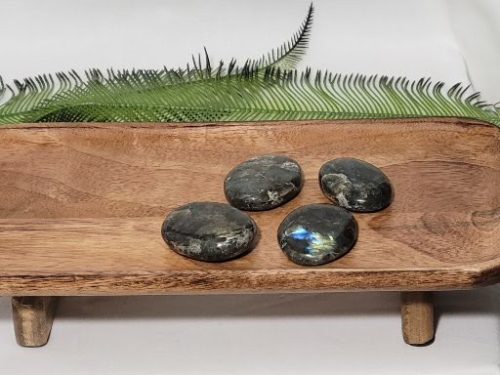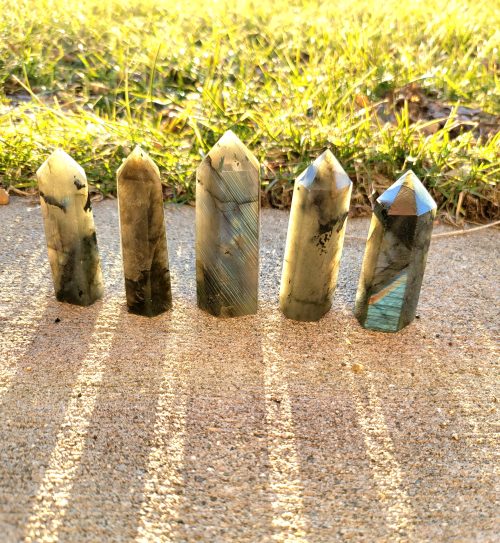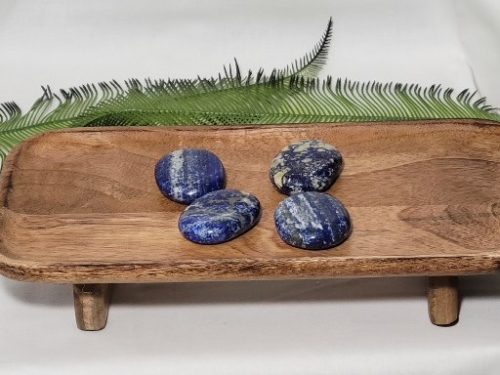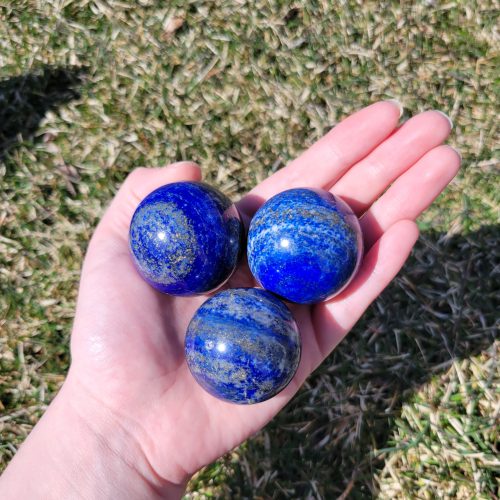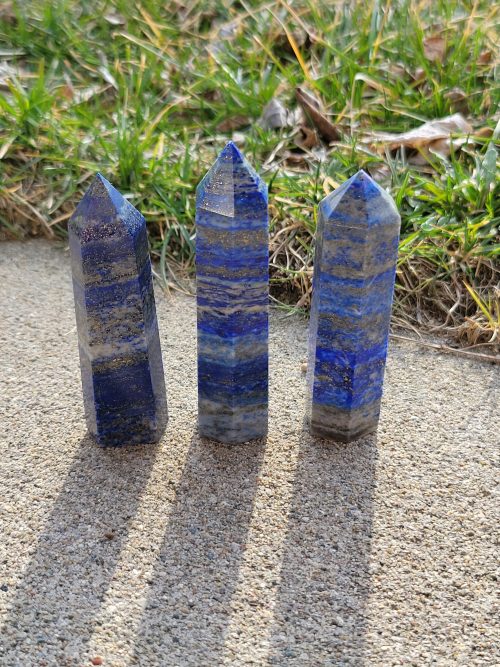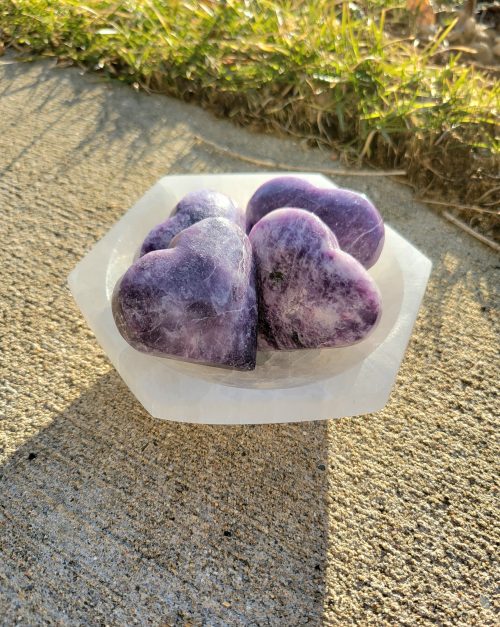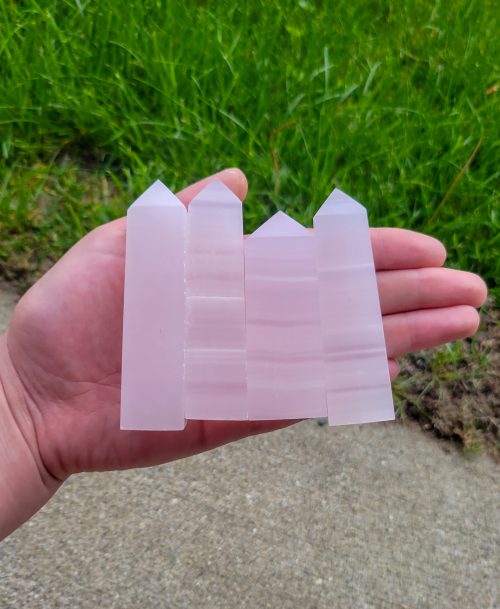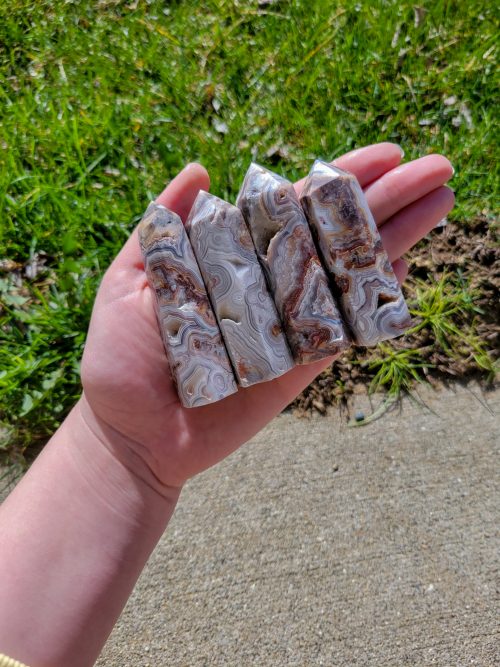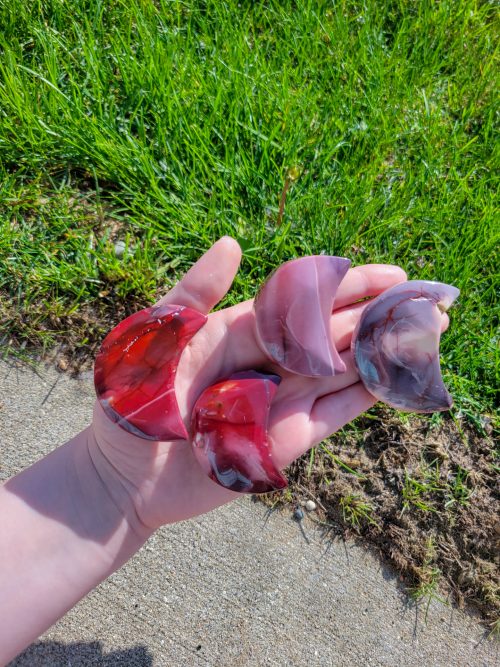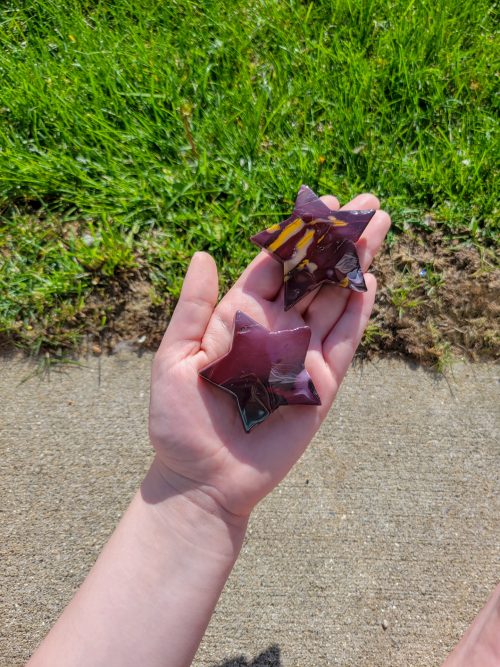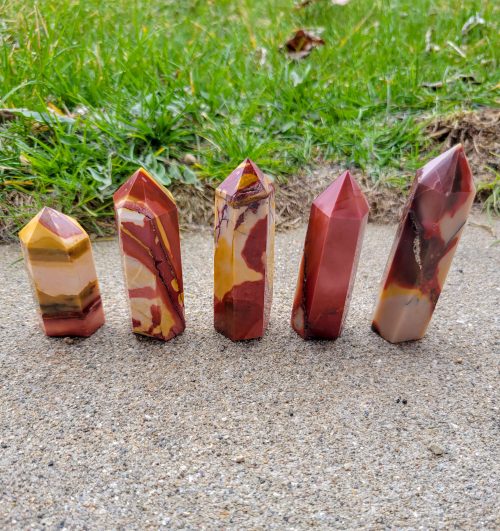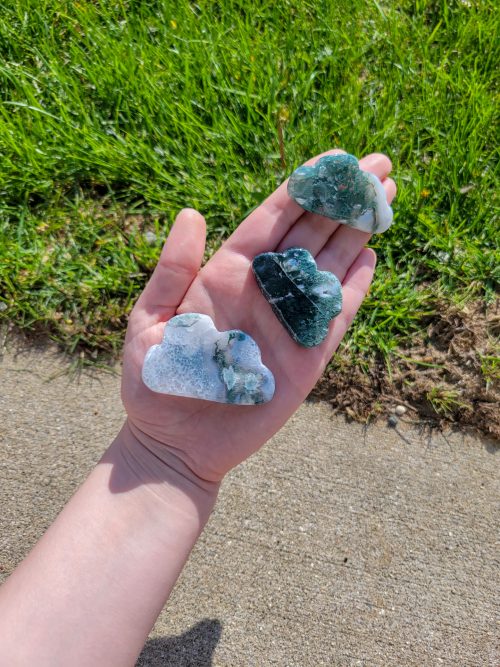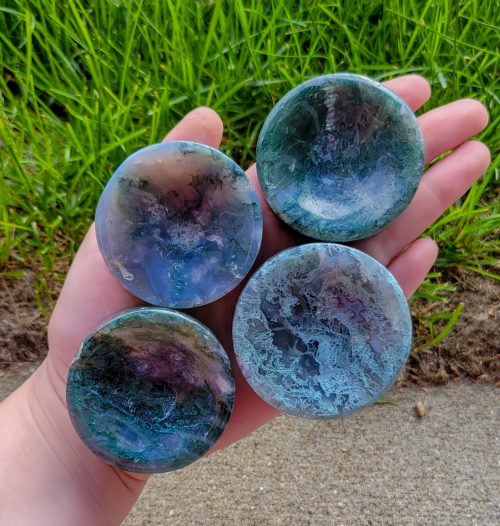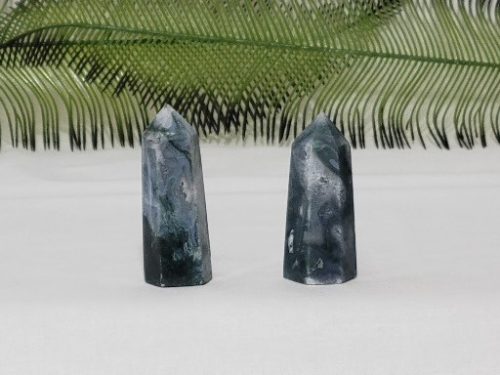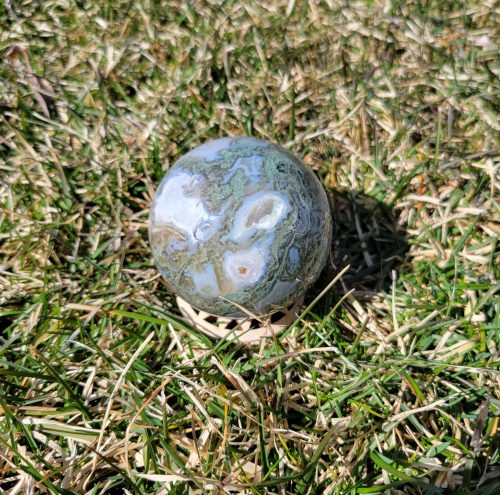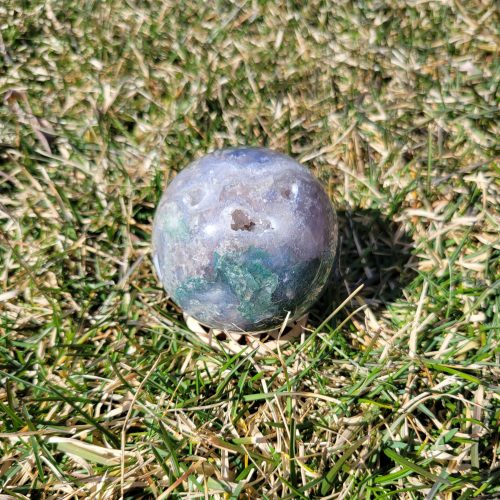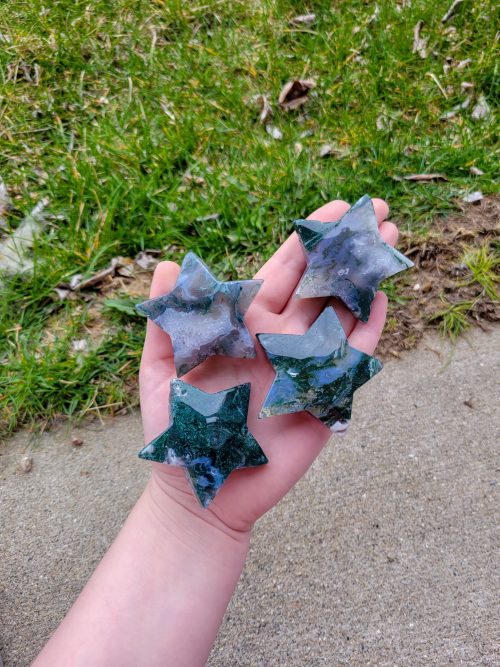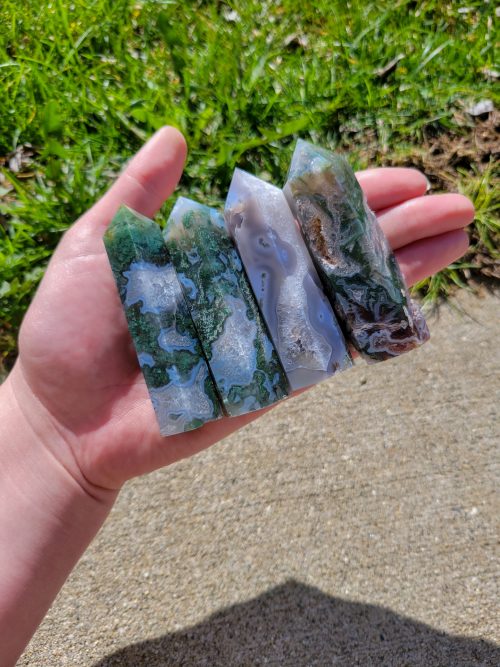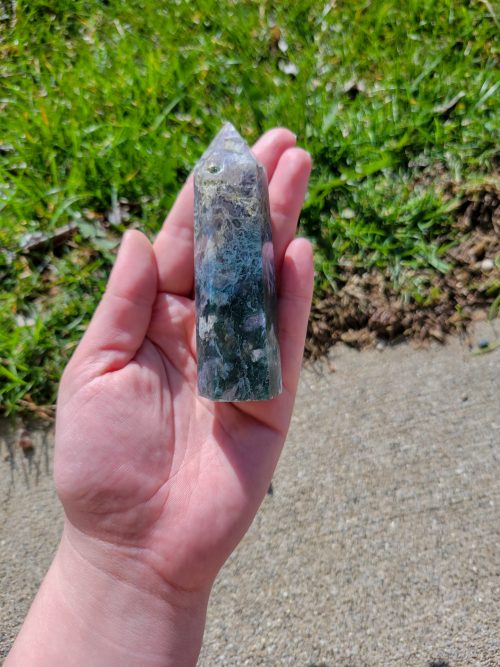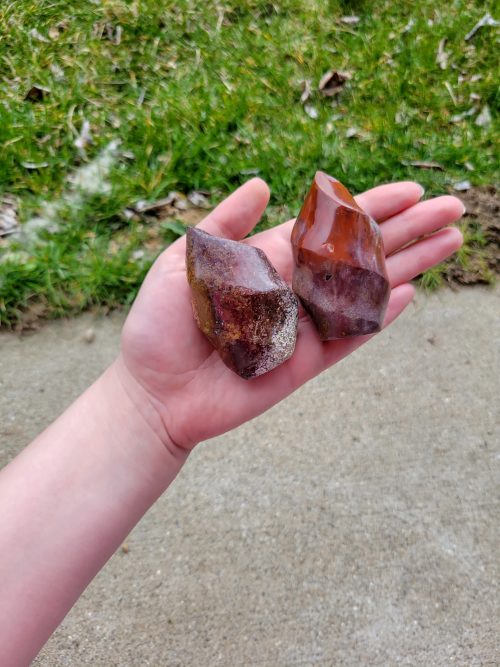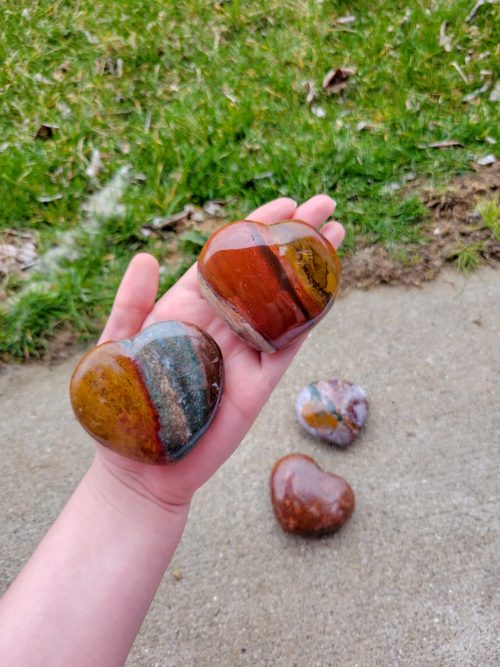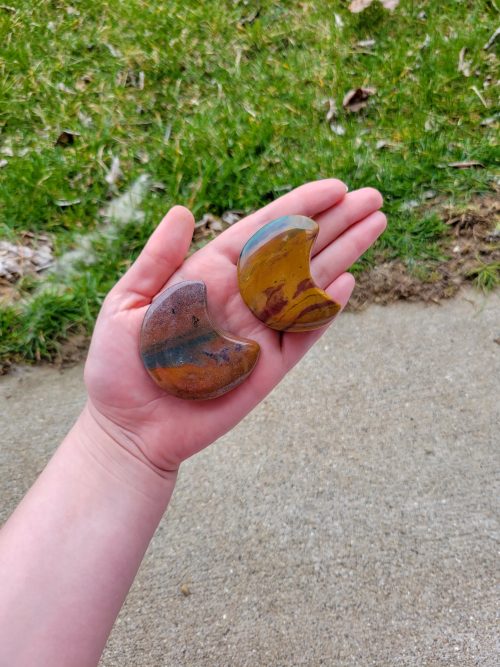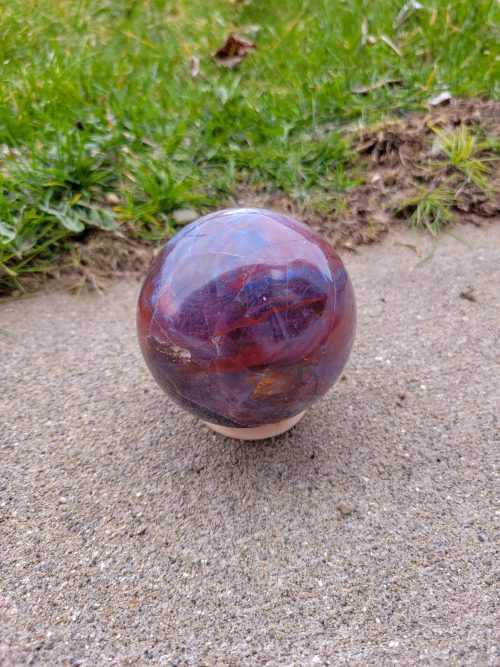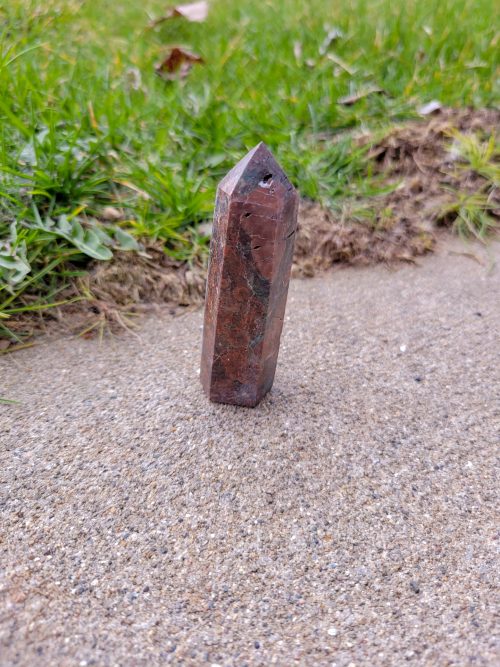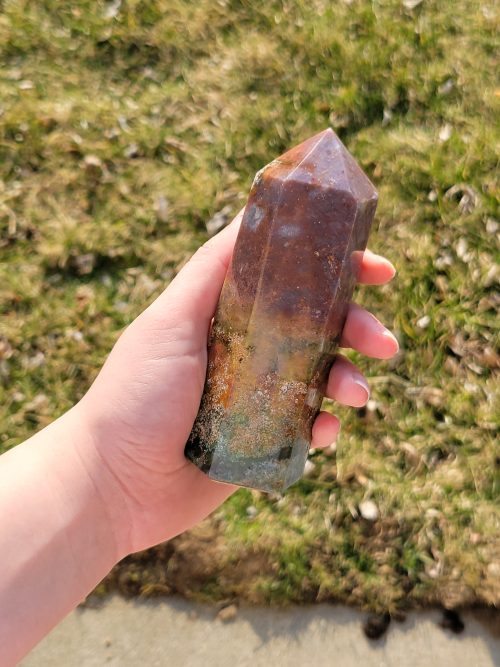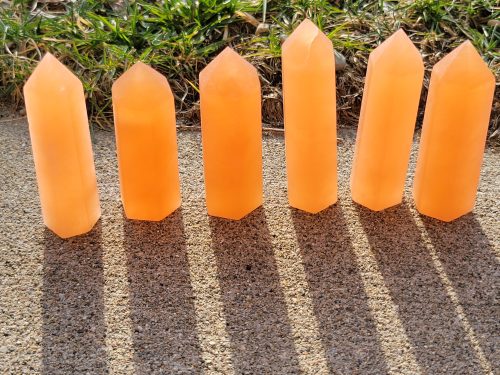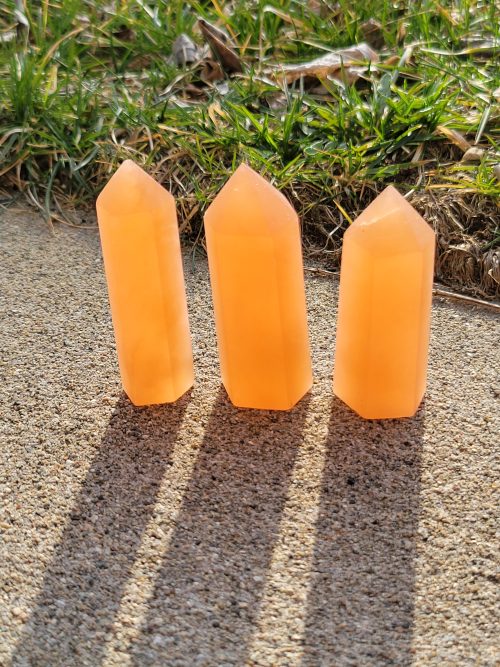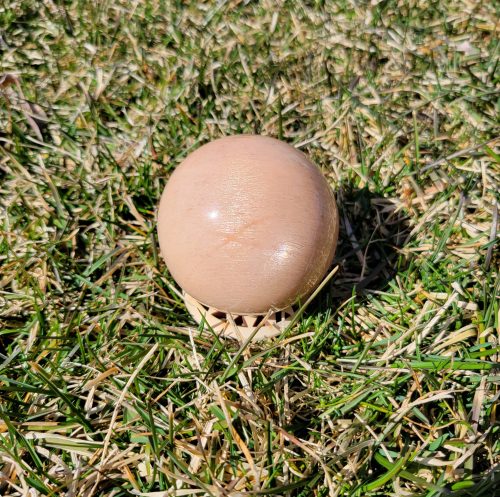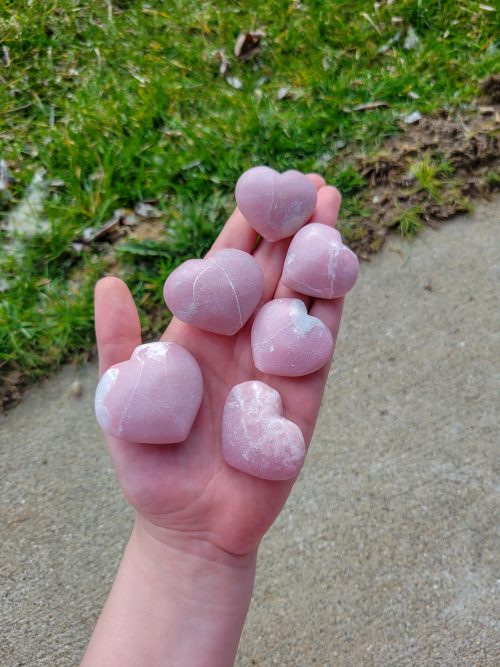-
8.5cm - 9.5cm Tall Kiwi Jasper is a mix of amazonite, tourmaline, jasper, and quartz. It gets its name from the green tinge (amazonite) it has in addition to the green specks on it (tourmaline). This mineral is mainly found in New Zealand. ***Due to natural variations in stones, appearance will vary***
-
7.5cm x 5cm x 7.5cm Labradorite is a type of feldspar that gets it's flashy colors from intergrowths within the mineral. Light then travels through these intergrowths and displays its beautiful colors. These colors can range from purples and blues to greens and yellows. This mineral gets its name from where it was originally discovered, in Labrador, Canada. This mineral was also found in Finland during WWII and was also known as "Falcon's Eye". ***Due to natural variations in stones, the appearance will vary***
-
5cm x 4.5cm x 7.5cm Labradorite is a type of feldspar that gets it's flashy colors from intergrowths within the mineral. Light then travels through these intergrowths and displays its beautiful colors. These colors can range from purples and blues to greens and yellows. This mineral gets its name from where it was originally discovered, in Labrador, Canada. This mineral was also found in Finland during WWII and was also known as "Falcon's Eye". ***Due to natural variations in stones, the appearance will vary***
-
4cm - 5cm Labradorite is a type of feldspar that gets it's flashy colors from intergrowths within the mineral. Light then travels through these intergrowths and displays its beautiful colors. These colors can range from purples and blues to greens and yellows. This mineral gets its name from where it was originally discovered, in Labrador, Canada. This mineral was also found in Finland during WWII and was also known as "Falcon's Eye". ***Due to natural variations in stones, the appearance will vary***
-
6cm - 8cm Tall Labradorite is a type of feldspar that gets it's flashy colors from intergrowths within the mineral. Light then travels through these intergrowths and displays its beautiful colors. These colors can range from purples and blues to greens and yellows. This mineral gets its name from where it was originally discovered, in Labrador, Canada. This mineral was also found in Finland during WWII and was also known as "Falcon's Eye". ***Due to natural variations in stones, the appearance will vary***
-
5cm - 6cm Lapis Lazuli is a semiprecious stone that is commonly used in jewelry and decor all over the world. It is a metamorphic mineral who's composition is variable. Very frequently, Lapis has Pyrite inclusions in it. This semiprecious stone gets its color from the deep blue Lazurite in it (also found in sodalite). Lapis is found in the mines Badakshan, northeastern Afghanistan, and those near Ovalle, Chile. ***Due to natural variations in stones, the appearance will vary***
-
45mm Lapis lazuli forms near igneous interferances where limestone or marble has been altered by contact metamorphism or hydrothermal metamorphism. In these rocks, lazurite replaces portions of the host rock and often develops within certain bands or layers which can include other minerals such as pyrite and white calcite. Lapis Lazuli is mostly found in Afghanistan but can also be found in Chile, Russia, Canada, Argentina, Pakistan, and the US. Within the US, these stones can be found in Colorado, California, and Arizona. ***Due to natural variations in stones, appearance will vary***
-
8.5cm - 9.5cm Tall Lapis lazuli forms near igneous interferances where limestone or marble has been altered by contact metamorphism or hydrothermal metamorphism. In these rocks, lazurite replaces portions of the host rock and often develops within certain bands or layers which can include other minerals such as pyrite and white calcite. Lapis Lazuli is mostly found in Afghanistan but can also be found in Chile, Russia, Canada, Argentina, Pakistan, and the US. Within the US, these stones can be found in Colorado, California, and Arizona. ***Due to natural variations in stones, appearance will vary***
-
5cm x 5cm x 3cm Lepidolite is a rare, lithium-rich, mica mineral. This beautiful mineral's color ranges from pinks and reds to purple. The color comes from the amounts of magnesium found in the mineral. Lepidolite is found in Brazil, Madagascar, Australia, and many other countries where lithium is found. ***Due to natural variations in stones, the appearance will vary***
-
7.5cm - 8cm Tall Calcite is a mineral when originally formed is colorless and opaque and can come in many different forms of translucency. It gets its beautiful colors and banding from impurities in the rocks the specimen is formed in. Calcite gets its name from the water within the mineral being rich in calcium. This soft mineral can be found all over the world; mainly in shallow marine settings such as hydrothermal veins and hot spring deposits. Many marine life species, such as crabs and coral, rely on calcite to form their shells. ***Due to natural variations in stones, the appearance will vary***
-
8cm Tall Mexican Agate is a form of Crazy Lace Agate found in Mexico. These crystals form inside of igneous rocks over a long period of time and get their banding from years of siliceous groundwater building up in the cavities of these rocks. What makes this mineral so beautiful and unique is that the color variations and banding patterns are completely dependent on the environmental factors around them. This makes it so that every formation is different and there are no two formations that are the same! ***Due to natural variations in stones, appearance will vary***
-
6cm Wide Moss agate is a semi-precious stone. It is a variety of Chalcedony and it formed from silicon dioxide. The field of this stone is a milky white or clear quartz with blue and green inclusions that form as a result of oxides in the mineral. The dendritic inclusions are mainly made from manganese or iron that grow into patterns to give it the moss look. ***Due to natural variations in stones, the appearance will vary***
-
5.5cm Wide Moss agate is a semi-precious stone. It is a variety of Chalcedony and it formed from silicon dioxide. The field of this stone is a milky white or clear quartz with blue and green inclusions that form as a result of oxides in the mineral. The dendritic inclusions are mainly made from manganese or iron that grow into patterns to give it the moss look. ***Due to natural variations in stones, the appearance will vary***
-
5cm Wide Moss agate is a semi-precious stone. It is a variety of Chalcedony and it formed from silicon dioxide. The field of this stone is a milky white or clear quartz with blue and green inclusions that form as a result of oxides in the mineral. The dendritic inclusions are mainly made from manganese or iron that grow into patterns to give it the moss look. ***Due to natural variations in stones, the appearance will vary***
-
5.5cm Wide Moss agate is a semi-precious stone. It is a variety of Chalcedony and it formed from silicon dioxide. The field of this stone is a milky white or clear quartz with blue and green inclusions that form as a result of oxides in the mineral. The dendritic inclusions are mainly made from manganese or iron that grow into patterns to give it the moss look. ***Due to natural variations in stones, the appearance will vary***
-
6cm - 7cm Tall Moss agate is a semi-precious stone. It is a variety of Chalcedony and it formed from silicon dioxide. The field of this stone is a milky white or clear quartz with blue and green inclusions that form as a result of oxides in the mineral. The dendritic inclusions are mainly made from manganese or iron that grow into patterns to give it the moss look. ***Due to natural variations in stones, the appearance will vary***
-
60mm Wide Moss agate is a semi-precious stone. It is a variety of Chalcedony and it formed from silicon dioxide. The field of this stone is a milky white or clear quartz with blue and green inclusions that form as a result of oxides in the mineral. The dendritic inclusions are mainly made from manganese or iron that grow into patterns to give it the moss look. ***Due to natural variations in stones, the appearance will vary***
-
65mm Wide Moss agate is a semi-precious stone. It is a variety of Chalcedony and it formed from silicon dioxide. The field of this stone is a milky white or clear quartz with blue and green inclusions that form as a result of oxides in the mineral. The dendritic inclusions are mainly made from manganese or iron that grow into patterns to give it the moss look. ***Due to natural variations in stones, the appearance will vary***
-
6cm Wide Moss agate is a semi-precious stone. It is a variety of Chalcedony and it formed from silicon dioxide. The field of this stone is a milky white or clear quartz with blue and green inclusions that form as a result of oxides in the mineral. The dendritic inclusions are mainly made from manganese or iron that grow into patterns to give it the moss look. ***Due to natural variations in stones, the appearance will vary***
-
8cm Tall Moss agate is a semi-precious stone. It is a variety of Chalcedony and it formed from silicon dioxide. The field of this stone is a milky white or clear quartz with blue and green inclusions that form as a result of oxides in the mineral. The dendritic inclusions are mainly made from manganese or iron that grow into patterns to give it the moss look. ***Due to natural variations in stones, the appearance will vary***
-
10cm Tall Moss agate is a semi-precious stone. It is a variety of Chalcedony and it formed from silicon dioxide. The field of this stone is a milky white or clear quartz with blue and green inclusions that form as a result of oxides in the mineral. The dendritic inclusions are mainly made from manganese or iron that grow into patterns to give it the moss look. ***Due to natural variations in stones, the appearance will vary***
-
7.5cm Tall Ocean jasper is a rare and colorful material exclusively from Madagascar. It is described as a variety of Orbicular Jasper due to its orb-like inclusions. Ocean jasper is a name for what is known to be a spherulitic chalcedony which is a cryptocrystalline variety of quartz. Cryptocrystalline is a term that means its crystals are too small to be seen with the naked eye. ***Due to natural variations in stones, appearance will vary***
-
7.5cm Wide Ocean jasper is a rare and colorful material exclusively from Madagascar. It is described as a variety of Orbicular Jasper due to its orb-like inclusions. Ocean jasper is a name for what is known to be a spherulitic chalcedony which is a cryptocrystalline variety of quartz. Cryptocrystalline is a term that means its crystals are too small to be seen with the naked eye. ***Due to natural variations in stones, appearance will vary***
-
5.5cm Wide Ocean jasper is a rare and colorful material exclusively from Madagascar. It is described as a variety of Orbicular Jasper due to its orb-like inclusions. Ocean jasper is a name for what is known to be a spherulitic chalcedony which is a cryptocrystalline variety of quartz. Cryptocrystalline is a term that means its crystals are too small to be seen with the naked eye. ***Due to natural variations in stones, appearance will vary***
-
80mm Ocean jasper is a rare and colorful material exclusively from Madagascar. It is described as a variety of Orbicular Jasper due to its orb-like inclusions. Ocean jasper is a name for what is known to be a spherulitic chalcedony which is a cryptocrystalline variety of quartz. Cryptocrystalline is a term that means its crystals are too small to be seen with the naked eye. ***Due to natural variations in stones, appearance will vary***
-
8.5cm Tall Jasper is an opaque and impure variety of silicon dioxide. The name 'jasper' originates from the Greek word for 'spotted stone' which refers to its typical multi-colored, striped, spotted or flamed appearance. Jasper can come in just about any color depending on the sediments of the original mineral. This mineral is mostly found in India, Russia, Egypt, Madagascar, and Australia. ***Due to natural variations in stones, the appearance will vary***
-
13.5cm Tall Ocean jasper is a rare and colorful material exclusively from Madagascar. It is described as a variety of Orbicular Jasper due to its orb-like inclusions. Ocean jasper is a name for what is known to be a spherulitic chalcedony which is a cryptocrystalline variety of quartz. Cryptocrystalline is a term that means its crystals are too small to be seen with the naked eye. ***Due to natural variations in stones, appearance will vary***
-
8cm Tall ***Due to natural variations in stones, appearance will vary***
-
6.5cm Tall ***Due to natural variations in stones, appearance will vary***
-
60mm Moonstone is a potassium aluminum silicate feldspar. The peach variety ranges from a tan brown to a very light peach/pink. This range in color is caused by higher contents of aluminum within the feldspar’s chemical make-up. Most of Peach Moonstone comes from Madagascar, with a majority of the material being crafted by the local craftsmen/women. ***Due to natural variations in stones, appearance will vary***
-
10cm Tall Aventurine is a part of the quartz family. This mineral ranges many colors; pink being the most rare of all the colors. This mineral is composed of quartz with many micro inclusions (such as mica) to create its beautiful appearance. The pink tone in it comes from the hematite in the mineral. This mineral is most commonly found in India but can also be found in Brazil, Austria, Canada, and Tanzania. ***Due to natural variations in stones, the appearance will vary***
-
5cm Wide Pink opal is formed by bubbling water near volcanic ash. It dissolves the silica and forms in nodules from volcanic activity. Most specimens contain pink opal mixed with minerals such as rhyolite. These beautiful specimens are only found in Peru and Australia. ***Due to natural variations in stones, appearance will vary***

